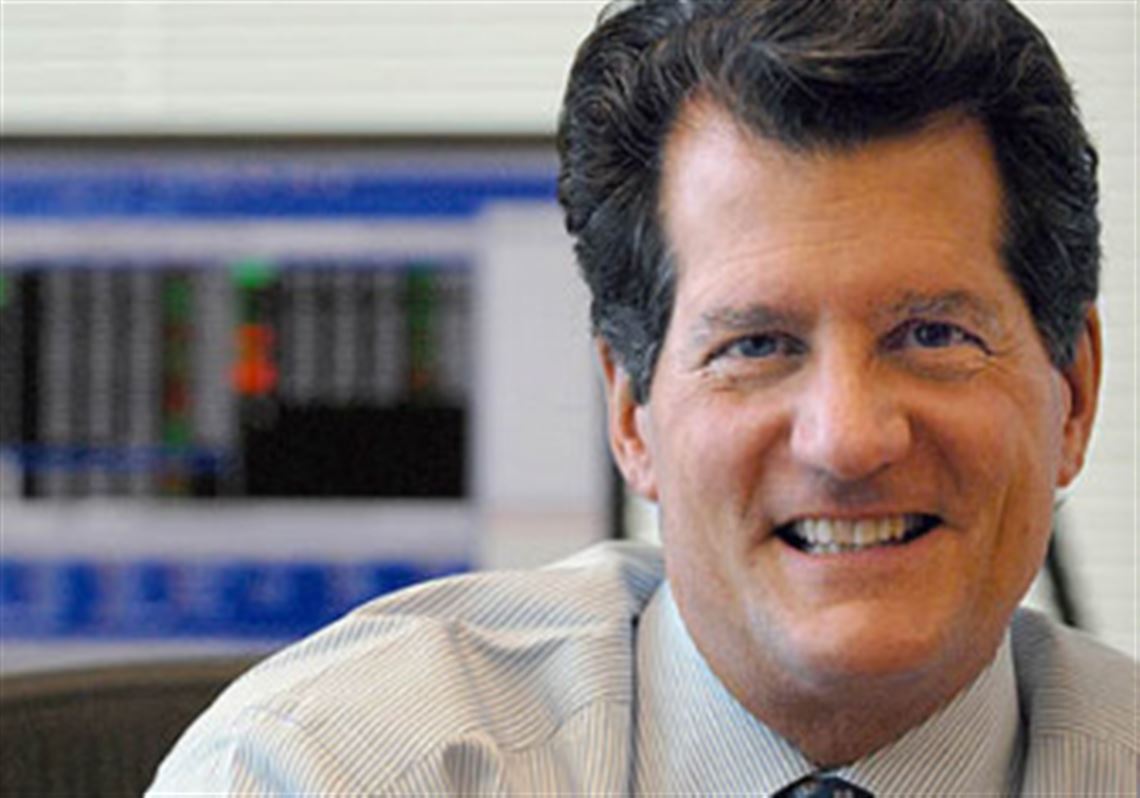While many companies were struggling in a challenging economy, Nova Chemicals reported record results for 2007 thanks in part to a strong export market and the so-called "Alberta Advantage," which keeps costs down.
The company, which generated sales of $6.7 billion last year, makes a range of plastics used in industrial products as well as consumer goods such as appliances and food packaging. Nova, which has its major production facilities in Canada, employs 2,800-plus workers worldwide, including 300 at its U.S. operating center in Moon, and 340 at a plant in Monaca.
Christopher Pappas joined Nova in 2000 as a senior vice president after more than two decades working for Dow Chemical Co., a Dow-DuPont joint venture, and a dot.com startup. He was named chief operating officer of Nova in 2006 and added the title of president in January.
Q: Does your appointment as president in January put you in line to succeed the current chief executive, Jeff Lipton, when he retires?
- Job: President and chief operating officer, Nova Chemicals
- Age: 52
- Hometown: Providence, R.I.; raised in Wilmington, Del; resides in Sewickley
- Education: Bachelor of science, civil engineering, Georgia Institute of Technology, 1978; master's of business administration, Wharton School of the University of Pennsylvania, 1989.
- Career: 1978-95: various sales, marketing and management jobs for Dow Chemical Co. in Charlotte; Richmond; Midland, Mich.; Cleveland, and Zurich, Switzerland; 1996-2000: vice president and commercial vice president, DuPont Dow Elastomers Inc.; 2000: president and chief executive officer, Paint and Coatings.com; 2000-06: senior vice president and president, styrenics, Nova Chemicals; 2006-08: chief operating officer, Nova Chemicals; January 2008-present: president and chief operating officer, Nova Chemicals.
A: There are no announced retirement or transition plans for the CEO role at Nova. The role of president and chief operating officer in our company is a position that is generally a transition role. And it now gives me the ability to see the whole company -- all the operations, engineering, manufacturing, research and development on a direct reporting basis. ... It allows me at least to learn the full scope of the company.
Q: What is your management style?
A: Collaborative. I really believe in input from a variety of people in terms of decision making. I generally believe in empowering people and/or teams of people. I have a high standard of accountability tied to that empowerment and a relatively rigorous process of working with my direct reports and my teams on hitting milestones and goals.
Q: Your undergraduate degree is in engineering. Did you ever envision running a big company like Nova?
A: I started as an architecture major. I ended up in civil engineering. As I made that migration, I also made a mental migration to thinking about a career in industrial business. I thought I could be an architect. I found out while I had a great engineering mind, I couldn't draw. And that became a problem in architecture.
Q: Nova reported record results for 2007. How did you do that during an economic slowdown and in the face of soaring energy costs?
A: We had our best year ever. We reported record earnings, record EBITDA (earnings before interest, taxes, depreciation and amortization). It was primarily driven by our ethylene-polyethylene business, which is a $4.2 billion business. It had a record performance because of an outstanding year in volume, an outstanding year in our ability to export out of North America to places like China, India, greater Asia, South America and Europe.
We had a year where in spite of high energy and oil costs, our competitive cost position on the feedstock (raw materials for manufacturing) we use in our operations in western Canada was highly advantaged vs. our competition.
Q: Can you explain the so-called "Alberta Advantage?"
A: Our assets in Alberta, Canada, are competitively advantaged vs. our peers on the Gulf Coast ... in Texas, Louisiana. In an environment where oil prices are relatively high, our competitors buy feedstocks aligned or linked to oil costs and we buy feedstocks in western Canada more tied to Canadian natural gas costs. That creates normally an Alberta Advantage that could be 6 or 8 cents per pound on the ethylene we make. In a year like 2007, the Alberta Advantage was 17 cents on average: We had a very high number because of relatively high oil (prices).
We also have the largest ethylene-polyethylene (manufacturing) site in the world in Joffre, Alberta, Canada. So our scale and our efficiencies on costs are very good. You have input costs that are lower and manufacturing and efficiency costs that were lower than our competitors and that combination is pretty powerful.
Q: Why is the export market for Nova's products so strong right now? .....
A: Not only are countries like China, India and the rest of Asia and Latin America importing more polyethylene, they're using it for more and more diversified and higher-value applications. It used to be that most polyethylene going into China was being used for agricultural mulch film. Now there's much greater use for it in food packaging whether it's packaging for rice, processed foods, detergent or other disposable consumer products. That takes a more sophisticated, better quality polyethylene and we have the technology that is good for that. Latin America would be another place with lots of growth in polyethylene and commodity plastics ... sophisticated food products packaging and disposables on the shelf very much like what you would see in the U.S.
I was in India last year with Reliance Industries, a company that licenses our polyethylene technology in India. We were looking at a whole roomful of commercial applications for Nova polyethylene in India, which looked very much like the grocery store shelves at Giant Eagle: detergent sachets, stand-up pouches for drinks, large pouches for rice. All of that stuff has multilayer packaging which is polyethylene. You would not have seen that in India five years ago.
Q: What's your outlook for 2008, especially in light of a sluggish U.S. economy?
A: We see 2008 as a strong year. We see the competitive advantage of Alberta being strong throughout the year. We see the world economic condition being at least good. ... We do see North America and Europe being the slow parts of the world relatively speaking. But even if those parts of the world are flat in growth, we see enough growth in the rest of the world for a pretty good global demand rate for polyethylene. We can make good money when the U.S. economy is a little bit slow because of the growth rates of our products in the rest of the world. It keeps the plants in North America running high because we're exporting 20 percent of our output.
Q: Nova established its U.S. operating center and relocated its top executives here in 1999. Do you have any regrets with the cutbacks in service at Pittsburgh International Airport?
A: When we came to Pittsburgh, we went through a screening process ... the types of things we (considered) were cost of living, quality of education, quality of work force, health care, cultural amenities, general lifestyle advantages that might include professional sports, and quality of the airport, of course, because we do a lot of traveling. Pittsburgh scored in 1999 extraordinarily well in all of those dimensions.
If you asked me today ... I would say it would still score extremely well on all of those dimensions except for one: quality of service at the airport. Not the facility, but the service. And that has been a big and negative change. And I believe it's a big weakness in Pittsburgh's ability to attract large, new business to the area. I think it's a real problem. I think if we can get arms around improving the economic condition of the city and county, and improve the service at the airport, everything else we have here is in great shape.
I'm optimistic on the city and county. I'm less optimistic on the airport based on the last several years of track record.
Q: How is Nova handling the cutbacks in air service with the amount of international business you do?
A: We cope. It costs us time, which is money. It costs us aggravation, which is, at the end, money because it creates an environment where people are perhaps less able to make good decisions. They're pressed for time, they get frustrated, they don't get home to their families when they want to. They get stranded, they have to leave very early to get home very late. They miss connections and they have lack of connections. So it's very, very frustrating.
One of the small things we've done between here and Calgary, which is a major hub of ours, is to set up a shuttle service using our corporate jet a couple times a week to shuttle our employees back and forth so they don't have to go through three connections to get from Pittsburgh to a major place of business. It's proven to be pretty good but it's a minor kind of Band-aid solution to the problem.
Q: Would Nova consider moving its U.S. operating center elsewhere because of the airport?
A: We have not thought about that. And I don't think that element alone would drive us to that kind of decision. But I would say for somebody coming in, that element could make a big difference.
Q: Do you have mentors or role models?
A: Along the way, I've read and I continue to read a lot of things and watch a lot of leaders. No, I don't single any out per se. ... My father, who was a successful business executive, I learned a lot from him. He was in the chemicals industry with DuPont. ... And I'm still learning, so I'm not finished. I'm young enough to keep learning. And that's important.
First Published: April 13, 2008, 8:00 a.m.

















